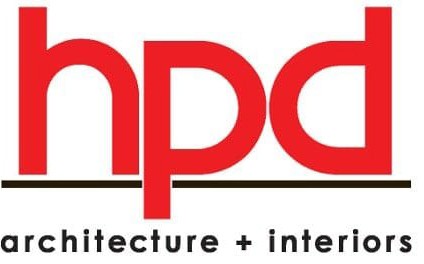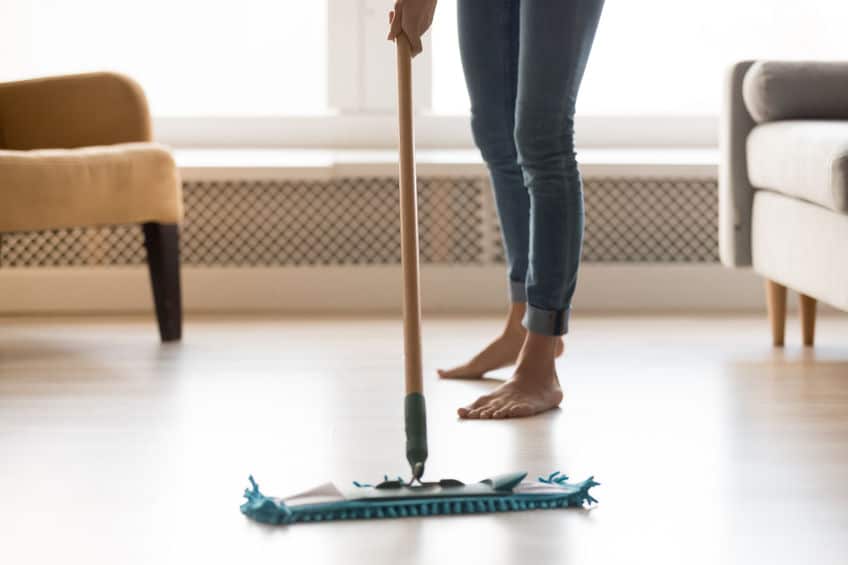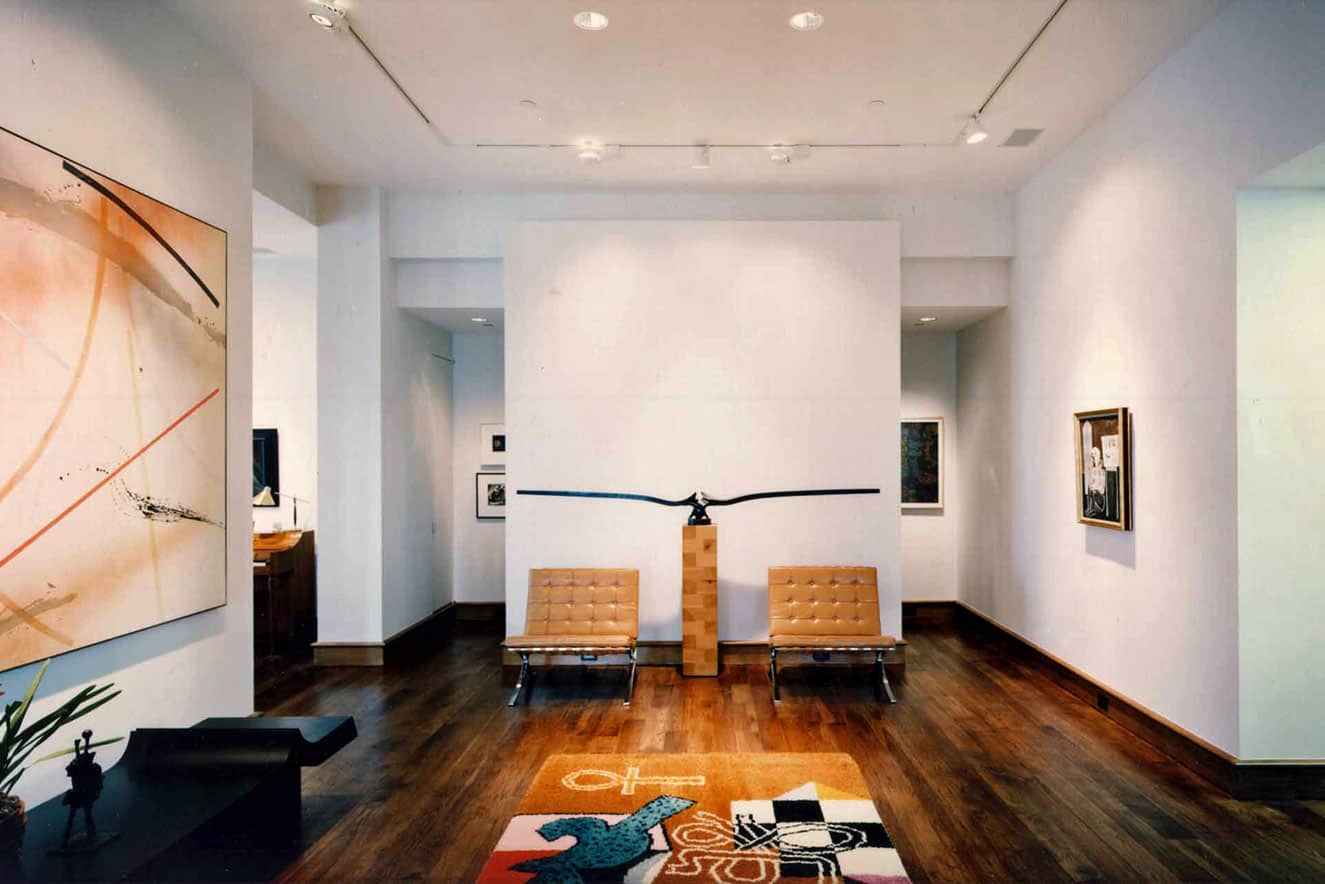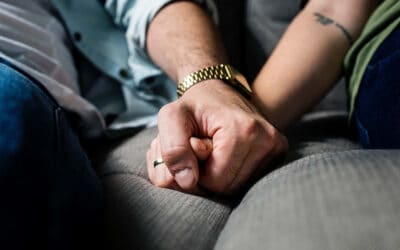It’s always a great time to clean and disinfect your home, but before you start that deep clean, you may want to know what types of cleaners are safe for each surface in your home.
The first thing you’ll want to know is that cleaning and disinfecting are two very different things.
- Cleaning is about removing contaminants, dust or debris from a surface. Clean surfaces by wiping them with soapy water (or a cleaning spray), and a hand towel or microfiber cleaning cloth.
- Disinfecting kills pathogens. To disinfect, apply a surface-appropriate disinfectant. When using any type of disinfectant, you must wait 30 seconds to several minutes for it to dry so that it will effectively kill germs or viruses.
This post contains links to products we love. We participate in the Amazon Associates program. If you choose to purchase, it does not increase the cost to you, but we may receive a small commission in return.
Best household disinfectants include:
- bleach
- hydrogen peroxide
- rubbing or isopropyl alcohol
- ammonia
- vinegar
- Over-the-counter products that claim to be “disinfectants,” such as Purell, Clorox, and Lysol, should have an EPA registration number on the label as proof that they have met all government requirements for effectiveness.
- Disinfecting products should have an alcohol content of 60 percent or higher to be effective.
But how do you know WHAT KIND of cleaners and disinfectants are best for the different surfaces in your home?
Here’s a guide:
CLEAN & DISINFECT CERAMIC TILE & PORCELAIN
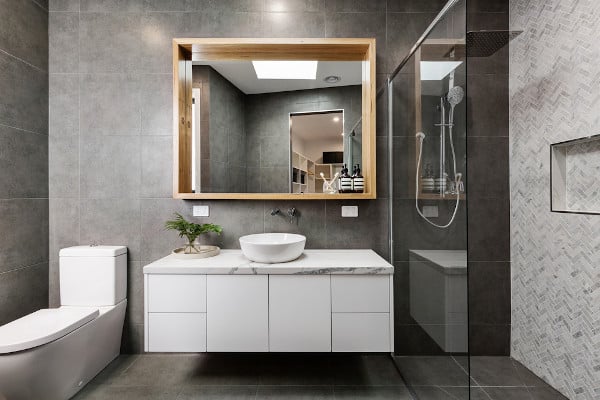
Clean
Vacuum or sweep the tile to remove any dirt and dust particles. Fill a bucket with a gallon of warm water and mix in a ¼ cup of white vinegar, a small amount of all-purpose-cleaner, dish soap or the manufacturers recommended cleaning solution. Mop or wipe tile with a soft mop or sponge. Water alone can be used for a quick clean up.
Disinfect
To disinfect tile, mix 1 gallon of water with ½ cup ammonia, ½ cup white vinegar, and ¼ cup borax. Pour your disinfecting mix into a spray bottle or soak a mop in the solution to spread it across tile floors. Allow solution to stay wet on surface for several minutes to ensure proper disinfection. Rinse the tile surface with cool water to remove the disinfectant.
CLEAN & DISINFECT WOOD FLOORS
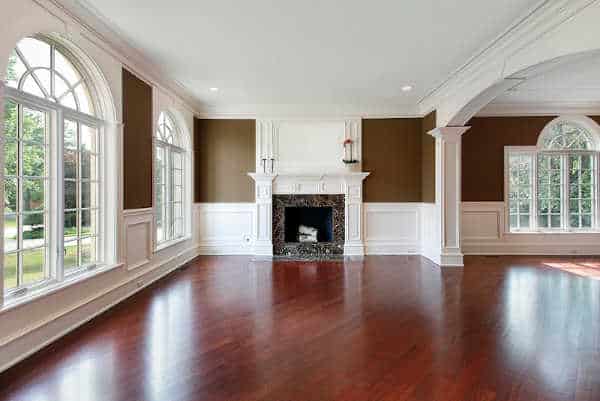
Clean
Dust wood floors with a mop with a microfiber head that has been treated with a dusting agent to pick up dust, dirt, and pet hair that might scratch the floor surface. You can also vacuum with a floor-brush attachment as they don’t scratch the hard wood. For daily or weekly cleaning, try a hard wood specific cleaner.
Disinfect
While vinegar is often sited as the best natural disinfectant for wood floors, it can also wear down the polyurethane coating. An antibacterial floor wash made for wood flooring is your best option. Don’t use vinyl or tile floor cleaners either, as these products will damage, rather than clean, wood floors.
You can also make your own cost-effective DIY floor cleaner at home with nothing more than hydrogen peroxide, which lifts stains and dries those porous wood surfaces simultaneously. Simply pour 3% hydrogen peroxide into a spray bottle and spray it directly onto your wood floors. Allow the peroxide to sit for a couple of minutes before wiping it with a microfiber cleaning cloth, which won’t damage the surface of your floors. Keep in mind that hydrogen peroxide expires six months after opening but can last up to three years unopened.
CLEAN & DISINFECT STONE
Clean
For daily cleaning, simply mix one teaspoon of dish detergent in four cups of water and keep in a spray bottle. Never use harsh, abrasive cleaners, scrubbing pads or sponges on stone. Soft cloth is better. Also avoid cleaners like vinegar, lemon juice, or foaming bathroom cleaners that can dull the finish.
Disinfect
Same as above: Mix mild antibacterial dish soap with warm water and apply to the surface and stay away from abrasive scrubbing pads. It’s also important to maintain a good seal on the surface of your stone with a high-quality stone sealer. This will help keep the stone from absorbing liquids and developing stubborn stains. You can also minimize contamination on your countertops by using non-porous, BPA-free cutting boards.
See also our Free guide for Cleaning Natural Stone Surfaces.
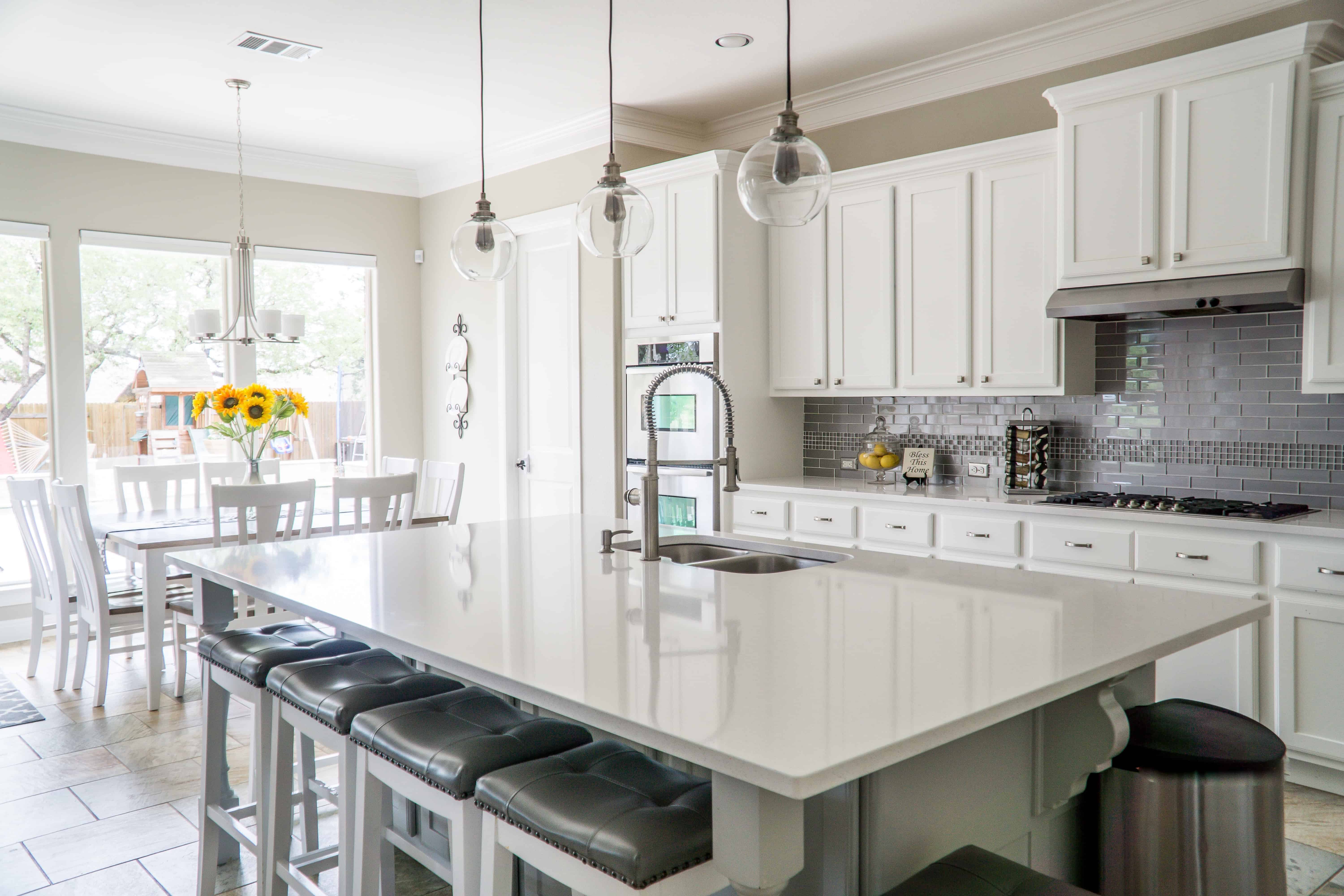
CLEAN & DISINFECT QUARTZ
Clean
When cleaning quartz countertops, stay away from harsh scrubbers and cleaners because they can damage the surface. Instead, wipe the quartz surface down with a washcloth dipped in warm, soapy water and use smooth, circular motions. Once done, wring out the cloth and rinse it with fresh water, and then wipe the area again to get rid of any traces of soap.
Since commercial quartz is non-porous, it won’t absorb and lock in stains but you should still clean any spills as soon as they happen so they don’t have time to harden onto the counter. If you do find yourself needing to clean a hardened or crusty mess, spray the gunk with warm water to soften it, and then use a flexible plastic (never metal) scraper to remove it. Sometimes the use of cleaners can cause a film to develop on your countertops. If this happens, simply combine equal parts of distilled white vinegar and water in a spray bottle, mist the counter surface, and wipe it down with a soft kitchen sponge. Voilà! Streak free!
Disinfect
Stay away from highly acidic or highly alkaline products such as glass cleaners, oven cleaners, concentrated bleach, etc. when disinfecting quartz as those types of products can disintegrate the bond between the quartz and resin. Also, look for disinfectants that are EPA and FDA approved for natural stone surfaces, and that contain no phosphorus. As a reminder, always disinfect after any use of raw meat, eggs or dairy products.
CLEAN & DISINFECT WALLS
Clean
Did you know that you can vacuum your painted walls with a soft brush attachment? You can! Then follow up by wiping them down with a cloth-covered broom or an electrostatic dusting wipe. You can also use a mixture of warm water and a nonabrasive all-purpose cleaner and wipe the walls with a soft sponge. Avoid using a lot of water when cleaning painted walls though, as this can damage the paint. Better Homes and Gardens has some great tips for Cleaning Different Paint Finishes.
If cleaning an area with smudges or marks, clean a small area at a time and do not let cleaning solution dry on the wall. Start at the bottom and wipe any drips as you go.
Disinfect
To disinfect walls, use a mixture of warm water and dishwashing soap and a soft sponge. You can also try mixing one cup of ammonia, ½ cup of vinegar and ¼ cup of baking soda in one gallon of warm water. Wipe on the wall with a sponge and then dry thoroughly with a towel to prevent streaking and water damage.
Be careful when disinfecting light switches or door knobs that you do not let the disinfectant (Lysol spray, for example) run down the wall. The paint finish will be damaged.
CLEAN & DISINFECT MIRRORS, GLASS & APPLIANCES
Clean & Disinfect
When it comes to mirrors, glass and appliances, vinegar is your friend! Mix one part hot water to one part distilled vinegar. Using a sponge, moisten the window, glass or appliance with the solution and then wipe clean. You can also add the solution to a spray bottle if this is more convenient. Squeegees are great but can also lead to streaks. Interesting note… commercial cleaning products are responsible for leaving residue on glass that causes streaking not vinegar!
CLEAN & DISINFECT HIGH TOUCH AREAS
Give special attention to high-touch areas such as tables, doorknobs, light switches, countertops, cabinet doors and knobs/pulls, handles, toilets, faucets, sinks, desks, phones, keyboards, remote controls, etc. Bleach is one of the most economical disinfecting agents. The CDC recommends a recipe of 1/3 cup of bleach per gallon of water or four teaspoons bleach per quart of water. Important Reminder: Never mix bleach and ammonia together, as it creates a dangerous and potentially deadly chlorine gas.
Here’s a fun tip from a recent Reader’s Digest: Don a pair of white cotton gloves and then dip them in a 50/50 solution of hot water and white vinegar, and then clean your blinds by simply sliding your gloved fingers down each side simultaneously.
Find more information at the CDC’s complete list for cleaning and disinfecting your home. Additionally, the EPA recently updated its list of registered disinfectant products to include the product’s active ingredient and the amount of time the surface should remain wet to be effective against given pathogens.
Sources:
CDC.gov
BHG.com
WashingtonPost.com
Wired.com
Sherwin-Williams.com
More Home Decor & Maintenance Posts
17 Steps to Transform Your Home from Traditional to Contemporary
Have you ever asked yourself any of the following questions: How can I make my house look more modern? How can I update my traditional home? How can I incorporate contemporary home design into my old house? If so, you are not alone. The traditional house built in the...
Lightweight, Convertible, and Modular Furniture
Choosing lightweight, convertible, or modular furniture gives you a lot more flexibility in organizing your living space.
Bachelor Pad Ideas for the Modern Man
Click here for bachelor pad ideas and mood boards revolving around your comfort, convenience and ability to entertain like an expert!
How to Convert a Bachelor Pad into a Family Home
It is not hard to convert a bachelor pad to accommodate a partner or a family. It just needs some planning and adaptations.
